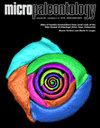Paleoceanographic Significance of Calcareous Nannofossil Assemblages in the Tropic Shale of Utah during Oceanic Anoxic Event 2 at the Cenomanian/Turonian Boundary
IF 1.3
4区 地球科学
Q3 PALEONTOLOGY
引用次数: 0
Abstract
Oceanic Anoxic Event 2 (OAE2) at the Cenomanian/Turonian Boundary (CTB: 93.9Ma) involved the global deposition of organic carbon-rich sediments, a distinctive positive shift in carbon isotope values, and significant species turnover, including changes in calcareous nannofossil assemblages. While it is thought that volcanism triggered organic C-rich sediment deposition during OAE2, it is unclear whether enhanced productivity, increased stratification, of some combination of the two increased organic matter preservation. Calcareous nannofossil assemblages have the potential to qualitatively assess changes in ocean nutrient and temperature conditions to disentangle such ecological dynamics during OAE2. Here we study an expanded section of the Tropic Shale in a drill core in southern Utah near the western margin of the Western Interior Seaway (WIS) to understand how circulation changed during the event and how this may have influenced primary productivity and organic carbon burial. Relative abundance data of well-preserved nannoplankton are complemented with measurements of trace metal, and organic carbon and carbonate concentrations to determine changes in temperature and water column structure, as well as controls on surface water productivity. Detailed statistical analysis helps refine species paleoecologies combined with information from planktic and benthic foraminiferal assemblages and organic biomarkers. Changes in calcareous nannofossil assemblages indicate that near the start of OAE2 the western WIS surface ocean actually cooled for a short time. Following this, surface waters became warmer and more stratified as a Tethyan water mass invaded the seaway. Assemblages suggest that warmth persisted for much of the OAE2 interval, while stratification waxed and waned. The local seaway cooled near the end of OAE2 as Boreal water masses streamed along the western margin. Variations, including the decrease in the abundance of Biscutum constans and short-lived peaks in the abundance of Eprolithus spp. are super regional or possibly global in extent. There is no correlation between calcareous nannofossil assemblages and trace metal concentrations, suggesting they were unaffected by volcanism-related nutrient inputs. Assemblages support other data that suggest increased stratification influenced organic carbon burial in the Western Interior Seaway, and possibly elsewhere, during OAE2.犹他州热带页岩中的钙质纳诺化石组合在仙人掌纪/都龙纪边界大洋缺氧事件 2 期间的古海洋学意义
震旦纪/都龙纪界线(CTB:93.9Ma)的大洋缺氧事件 2(OAE2)涉及全球富含有机碳沉积物的沉积、碳同位素值的明显正向变化以及物种的显著更替,包括钙质化石群的变化。虽然人们认为火山活动引发了 OAE2 期间富含有机碳沉积物的沉积,但目前还不清楚是否是生产力的提高、分层的增加或二者的某种结合增加了有机物的保存。钙质化石群有可能对海洋营养物质和温度条件的变化进行定性评估,从而厘清 OAE2 期间的生态动态。在此,我们研究了犹他州南部靠近西内海道(WIS)西缘的一个钻探岩芯中的热带页岩扩展剖面,以了解该事件期间环流是如何变化的,以及这可能是如何影响初级生产力和有机碳埋藏的。通过对痕量金属、有机碳和碳酸盐浓度的测量,对保存完好的浮游动物的相对丰度数据进行补充,以确定温度和水柱结构的变化,以及对表层水生产力的控制。详细的统计分析有助于结合浮游和底栖有孔虫组合以及有机生物标志物的信息,完善物种古生态学。钙质化石群的变化表明,在 OAE2 开始时,西印度洋西部表层海洋实际上在短时间内变冷。此后,随着哲罗纪水团侵入该海道,表层海水变得更加温暖和分层。集合体表明,在 OAE2 时间段的大部分时间里,温暖持续存在,而分层则时好时坏。在 OAE2 接近尾声时,随着北风带水团沿西缘涌入,当地海道逐渐冷却。变化,包括 Biscutum constans 丰度的下降和 Eprolithus spp.丰度的短暂高峰,在范围上是超区域性的,也可能是全球性的。钙质化石群与痕量金属浓度之间没有相关性,这表明它们没有受到与火山活动有关的营养物质输入的影响。化石组合支持其他数据,这些数据表明,在 OAE2 期间,分层的增加影响了西内航道的有机碳埋藏,也可能影响了其他地方的有机碳埋藏。
本文章由计算机程序翻译,如有差异,请以英文原文为准。
求助全文
约1分钟内获得全文
求助全文
来源期刊

Micropaleontology
地学-古生物学
CiteScore
3.20
自引率
6.70%
发文量
18
审稿时长
>12 weeks
期刊介绍:
The Journal of Micropalaeontology (JM) is an established international journal covering all aspects of microfossils and their application to both applied studies and basic research. In particular we welcome submissions relating to microfossils and their application to palaeoceanography, palaeoclimatology, palaeobiology, evolution, taxonomy, environmental change and molecular phylogeny. Owned by The Micropalaeontological Society, the scope of the journal is broad, demonstrating the application of microfossils to solving broad geoscience issues.
 求助内容:
求助内容: 应助结果提醒方式:
应助结果提醒方式:


